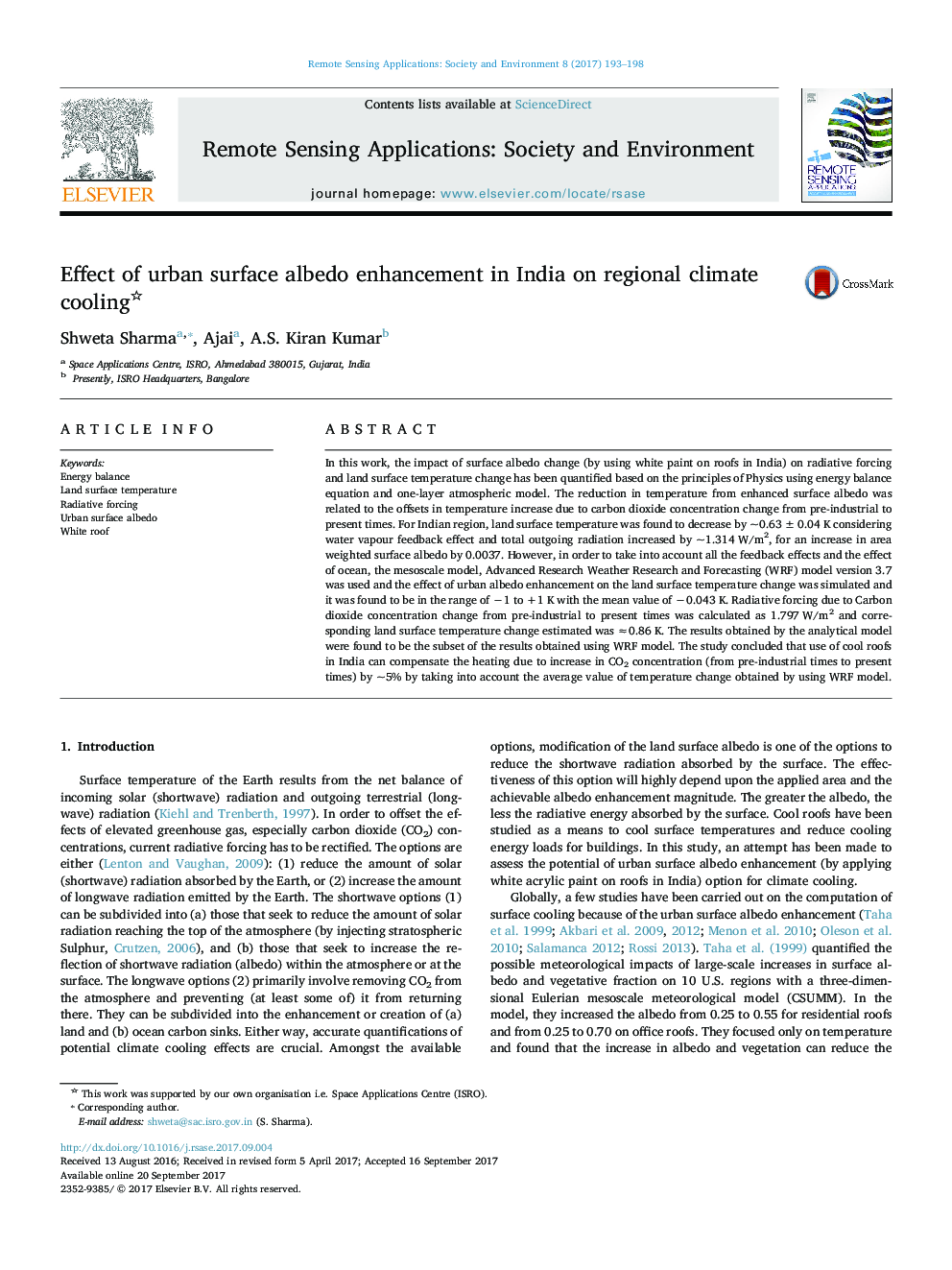| کد مقاله | کد نشریه | سال انتشار | مقاله انگلیسی | نسخه تمام متن |
|---|---|---|---|---|
| 5754614 | 1620999 | 2017 | 6 صفحه PDF | دانلود رایگان |
- Quantification of the impact of white roofs in India on radiative forcing and land surface temperature change.
- For Indian region, land surface temperature was found to decrease by ~0.63±0.04 K.
- Total outgoing radiation increased by ~1.314Â W/m2, for an increase in area weighted surface albedo by 0.0037.
- Simulated results using Weather Research and Forecasting (WRF) model was found to be in the range of -1 to +1Â K.
- The results obtained by the analytical model were found to be the subset of the results obtained using WRF model.
- Use of white roofs in India has the potential to compensate the heating due to increase in CO2 concentration.
In this work, the impact of surface albedo change (by using white paint on roofs in India) on radiative forcing and land surface temperature change has been quantified based on the principles of Physics using energy balance equation and one-layer atmospheric model. The reduction in temperature from enhanced surface albedo was related to the offsets in temperature increase due to carbon dioxide concentration change from pre-industrial to present times. For Indian region, land surface temperature was found to decrease by ~0.63±0.04 K considering water vapour feedback effect and total outgoing radiation increased by ~1.314 W/m2, for an increase in area weighted surface albedo by 0.0037. However, in order to take into account all the feedback effects and the effect of ocean, the mesoscale model, Advanced Research Weather Research and Forecasting (WRF) model version 3.7 was used and the effect of urban albedo enhancement on the land surface temperature change was simulated and it was found to be in the range of â1 to +1 K with the mean value of â0.043 K. Radiative forcing due to Carbon dioxide concentration change from pre-industrial to present times was calculated as 1.797 W/m2 and corresponding land surface temperature change estimated was â0.86 K. The results obtained by the analytical model were found to be the subset of the results obtained using WRF model. The study concluded that use of cool roofs in India can compensate the heating due to increase in CO2 concentration (from pre-industrial times to present times) by ~5% by taking into account the average value of temperature change obtained by using WRF model.
Journal: Remote Sensing Applications: Society and Environment - Volume 8, November 2017, Pages 193-198
